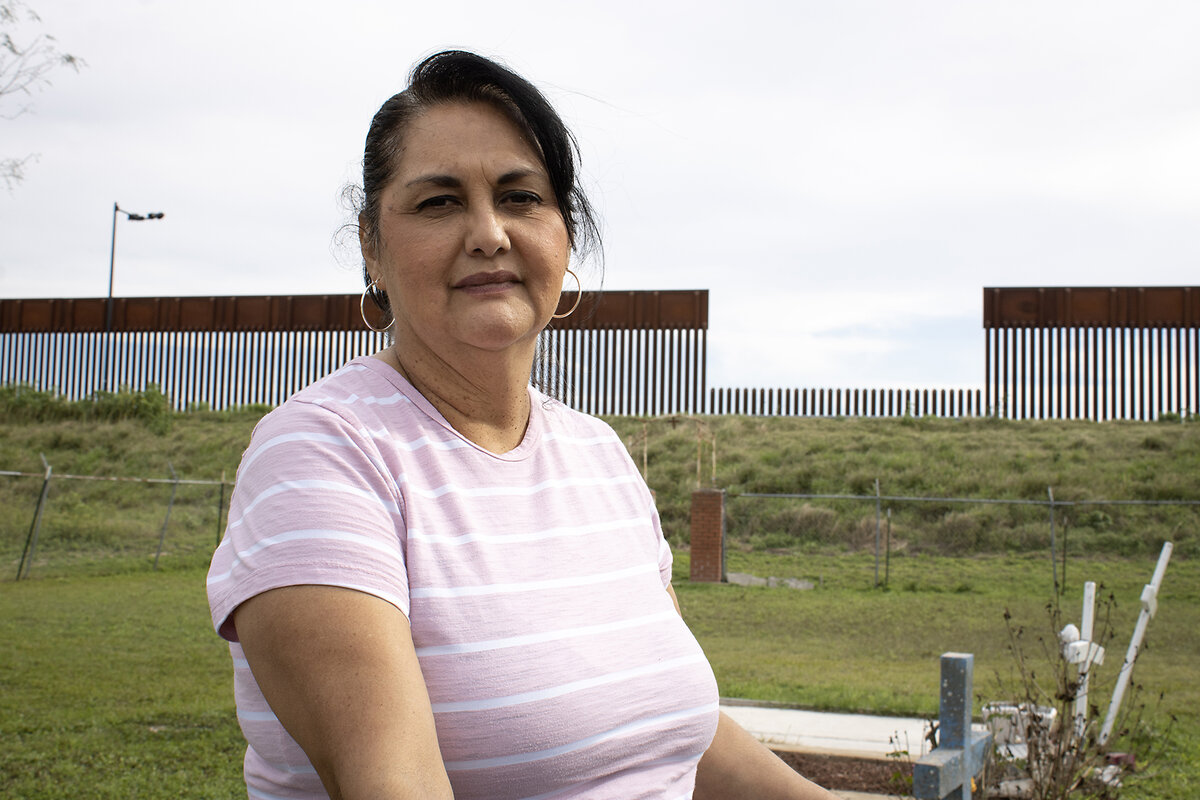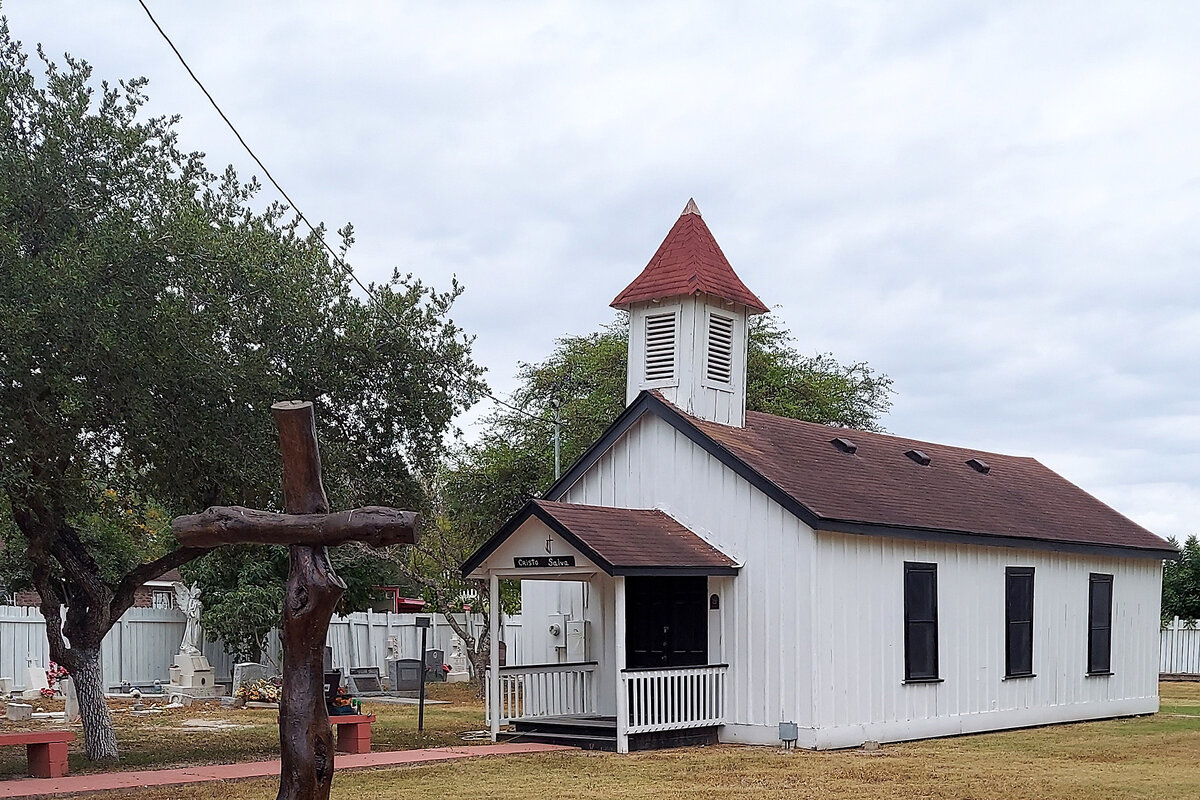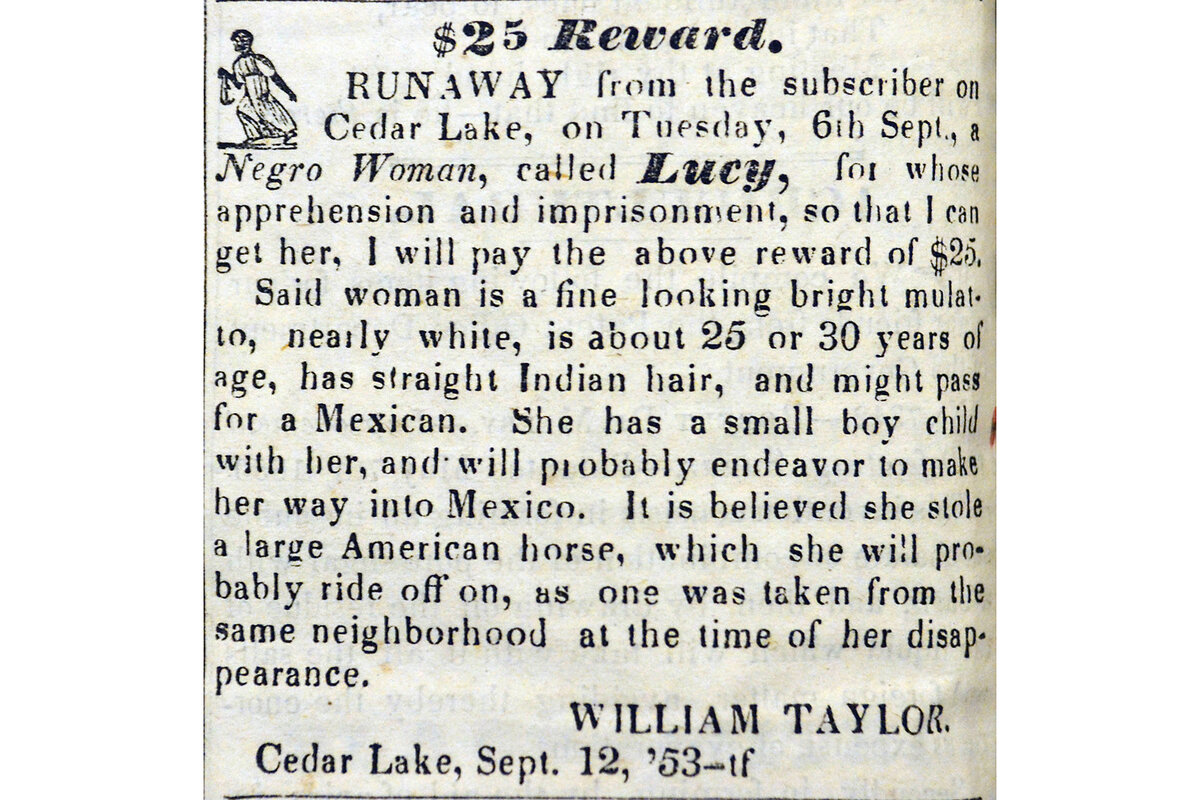Wait ... the Underground Railroad ran across the Rio Grande? A lost story surfaces.
Loading...
| HIDALGO COUNTY, TEXAS
Sofia Bravo was raised along the U.S.-Mexico border in Hidalgo County, Texas. Not until adulthood did she learn the story of family ancestors who, historians say, helped enslaved people reach freedom in Mexico.
A growing group of researchers and family members is unearthing more about this history. Much is known of the northbound Underground Railroad for freedom-seekers before the Civil War. Less is known about enslaved people’s journeys south to Mexico, which abolished slavery decades before the United States.
Why We Wrote This
A story focused onMexico played a role in the Underground Railroad as some enslaved people fled south. A growing group of researchers – and ancestors – brings to life their bravery.
Without many physical artifacts, families have relied on oral histories. Scholars, meanwhile, are tracking clues in other narratives like newspaper archives.
“I want other Americans to understand what really happened,” says Ms. Bravo.
One “Harriet Tubman” on the southbound railroad was Silvia Hector Webber. In the 1830s, Hector Webber and her partner bought her freedom, and that of their children, in Mexican Texas. Shortly after, when the Republic of Texas reintroduced slavery, she helped enslaved people seek freedom through her family’s ferry trading route.
Southbound routes to freedom in Mexico likely existed from the early 18th century until the U.S. abolished slavery in 1865.
The cemetery stands in the middle of a field, squared in by a chain-link fence. Sofia Bravo says her father installed it years ago to keep vandals out and history in.
Ms. Bravo was raised along the U.S.-Mexico border in Hidalgo County, Texas. Not until adulthood did she learn the lore of ancestors whose graves, likely here, face the broad sky. Before emancipation, historians say, her Webber family relatives helped enslaved people reach freedom in Mexico.
“I want other Americans to understand what really happened,” says Ms. Bravo, caretaker of the cemetery overseen by her family’s nonprofit. She didn’t learn this history in school, she says.
Why We Wrote This
A story focused onMexico played a role in the Underground Railroad as some enslaved people fled south. A growing group of researchers – and ancestors – brings to life their bravery.
“I’m glad that now it’s all, you know, coming out.”
As the Texan preserves her family’s slice of history, a growing group of researchers is unearthing more. Much is known of the northbound Underground Railroad for freedom-seekers before the Civil War. Less is known about enslaved people’s journeys south to Mexico, which abolished slavery decades before the United States.
Without many physical artifacts, families have relied on oral histories. Scholars, meanwhile, are tracking clues in other narratives like newspaper archives. More local and national media have taken note in recent years, some sparked by the construction of a Trump-era border wall close to historic sites. Those involved in this emerging field say they’re moved by a legacy of bravery long forgotten in two countries.
The southbound Underground Railroad is an “important part of our transnational borderland history,” says researcher Roseann Bacha-Garza at the University of Texas Rio Grande Valley.
The southern Underground Railroad route
One “Harriet Tubman” on the southbound railroad was Silvia Hector Webber. She was known to be kind and intelligent by other early settlers.
Ms. Hector Webber married a white man, John Webber, according to family lore. The two raised a family together, although it’s unclear when they married. Together, in the 1830s, the pair bought her freedom and that of their children, in Mexican Texas. Shortly after, when the Republic of Texas reintroduced slavery, they helped enslaved people seek freedom through her family’s ferry trading route. The Webbers were Ms. Bravo’s great-great-grandparents.
Southbound routes to freedom in Mexico likely existed from the early 18th century until the U.S. abolished slavery in 1865.
Mexico abolished slavery in 1829 – with exceptions for Anglo Texans in the north – and denied requests to extradite alleged runaways. On the heels of the Texas Revolution in 1836, the constitution of the newly formed Republic of Texas enshrined slavery into law.
As a historian, Alice Baumgartner has added to scholarship showing how “slavery was an important component in that decision to revolt against Mexico,” she says. Yet federalism is the cause traditionally cited, similar to older explanations about the Civil War, says the associate professor of history at the University of Southern California.
“We have to ask ourselves: federalism to defend what?” says Dr. Baumgartner. Many white Americans “were very concerned about the anti-slavery legislation that was being passed by Mexico’s Congress,” she adds. Texas became a slave state in 1845 when it joined the United States. On Juneteenth, Americans mark the late arrival of news here – delivered on June 19, 1865 – that the Civil War had ended and enslaved people were free.
María Hammack, from Mexico, says she never learned the “railroad” history growing up.
Hopefully recovering these stories will “challenge anti-Blackness and racism, not only in the United States, but in Mexico as well,” says the assistant professor of African American history at The Ohio State University. She notes that some Mexicans, whose Black ancestors escaped the U.S., have celebrated Juneteenth for over a century, cheering the freedom of their fellows to the north.
Most enslaved people fled north instead of south. Those headed to the northern U.S. or Canada are estimated at upwards of 100,000. By comparison, perhaps up to 10,000 may have reached, or attempted to reach, Mexico, researchers say.
Crossing the rugged Texas desert, it likely helped to have a horse, which some did steal. Mexicans who border-crossed for work might have also offered information to those fleeing. But without a strong abolitionist network down south, the voyage was often solitary, says Mekala Audain, associate professor of history at The College of New Jersey.
Most people assume that those escaping had “a lot of help along the way,” she says. “But for people who escaped to Mexico, it was largely an individual effort.” Some wore horsehair wigs to evade suspicion, and disguised themselves as white people.
Newly discovered history
Down on the Rio Grande, Ms. Bacha-Garza is digging as fast as she can. The anthropology lecturer is investigating the former sites of ferry landings that helped freedom-seekers traverse the water. But the shape-shifting of the river over two centuries has made that research hard.
Through a university archaeology project, which she manages, Ms. Bacha-Garza researches the history of the Jackson Ranch Church and Martin Jackson Cemetery, also in Hidalgo County. The Jackson family – including a white husband and an emancipated Black wife – is also understood to have aided freedom-seekers in Hidalgo County.
How many passed through is unknown. In some cases, she says, people decided to stay at the ranch after being “welcomed into their community.” This spring, the National Park Service added the property to its National Underground Railroad Network to Freedom program.
Another Texas-based researcher spends nights and weekends decoding notes from the 1800s. Kyle Ainsworth, a special collections librarian at Stephen F. Austin State University, has managed a database of thousands of archived newspaper clippings related to Texas slavery. That includes runaway-slave ads and law enforcement notices of captures.
Attrition is high among his volunteers, he says. “It’s pretty heavy stuff.”
One ad from 1861 offers a “liberal reward” for two rifle-armed men presumed fleeing to Mexico. An escaped woman named Lucy was marked for having “straight Indian hair, and might pass for a Mexican” in 1853. A capture notice of a “negro” man called Dan in 1865 published two months after the Confederate surrender – and three days before Juneteenth.
“I appreciate the people that ran away, and the people that didn’t,” says the researcher. Reflecting on their “extraordinary choices,” he says, “helps keep me going.”
New books are expected from Dr. Hammack and Dr. Audain, who says she and colleagues are increasingly peppered with questions by an eager public.
“We always laugh, and say, ‘We’re writing as fast as we can!’” says the historian.
Back at the Webber Cemetery, beneath the border wall, Ms. Bravo tidies flowers that tipped over in the wind. Some days she comes to mow.
She takes her tasks seriously. After all, she says, “I’m very proud to be part of this family history.”











